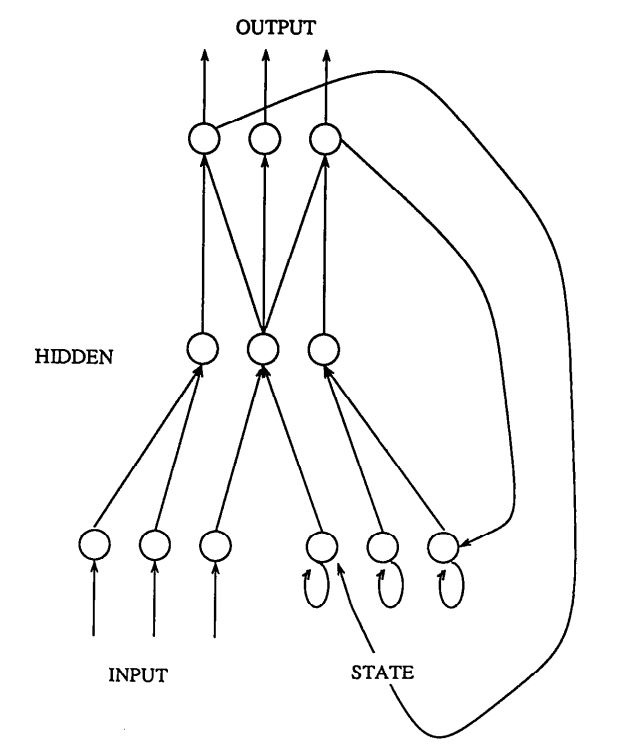
Computer programs with deep learning algorithms can recognize images that have dogs in them and sort through millions of photos in seconds. This is a huge advantage over toddlers who take months to learn "dog". This is the future for artificial intelligence. Here are some examples of how this technology can help us in our daily lives. Let's now look at some of its applications. The end result is that deep learning will enable us to make better choices about our lives. But it is important that you understand the costs and time required to run a deep-learning system.
Applications of deep learning
Deep learning has many uses. Deep learning has enabled artists to create paintings by using artificial intelligence. Deep learning is capable of recognising the style of painters, according to researchers who have used thousands and thousands photos to train them. Deep learning networks can also increase the accuracy of computer vision tasks by up to 96 per cent. However, the most powerful applications are still being developed. These are just a few examples of deep learning in action.

Deep learning systems can be time-consuming
Deep learning systems have a number of advantages, but they also have a high time and resource requirement. They are time-consuming and require a lot training data. It can take several weeks to train. This is a problem that many companies and researchers face. In order to solve this problem, deep learning systems should be used sparingly. Here are some examples showing how deep learning systems can be applied in practical situations. All these applications require a high level of computing power and patience.
Bias in deep learning models
Deep learning networks are vulnerable to bias. The age bias in face recognition is a particularly important example. Researchers also found that the model could be biased by race. If a black couple takes a picture next to a gorilla, it may mistakenly identify them as a gorilla. However, this does not necessarily mean that deep learning models can't be biased. These systems can be improved by many means.
Deep learning systems cost
The amount of data that needs to be processed increases, so the CPU and GPU requirements for deep-learning systems also increase. High-performance storage is needed to store the large datasets, which are becoming more expensive. High-performance SSDs will be required to store the increasing amounts of data. The cost of deep learning systems can be lowered by using SSD arrays. Storage isn't the only thing that affects the cost of deep-learning systems. SSDs can be expensive and can add up quickly.

Trends in deep learning
Deep learning is changing the way we interact with the outside world. These technologies are used to develop driverless cars and identify objects in satellite images. They are also used in cancer research and medical practice. For example, UCLA researchers have developed an advanced microscope that generates high-dimensional data. Deep learning in cancer research is now improving the detection and treatment of cancer cells. Other uses of deep learning technology include improved worker safety around heavy machinery, speech translation, and automated hearing.
FAQ
What will the government do about AI regulation?
AI regulation is something that governments already do, but they need to be better. They need to ensure that people have control over what data is used. Companies shouldn't use AI to obstruct their rights.
They also need to ensure that we're not creating an unfair playing field between different types of businesses. If you are a small business owner and want to use AI to run your business, you should be allowed to do so without being restricted by big companies.
What is the status of the AI industry?
The AI industry is expanding at an incredible rate. It's estimated that by 2020 there will be over 50 billion devices connected to the internet. This will mean that we will all have access to AI technology on our phones, tablets, and laptops.
Businesses will need to change to keep their competitive edge. Companies that don't adapt to this shift risk losing customers.
This begs the question: What kind of business model do you think you would use to make these opportunities work for you? Could you set up a platform for people to upload their data, and share it with other users. Or perhaps you would offer services such as image recognition or voice recognition?
Whatever you decide to do in life, you should think carefully about how it could affect your competitive position. You won't always win, but if you play your cards right and keep innovating, you may win big time!
What are some examples AI apps?
AI can be used in many areas including finance, healthcare and manufacturing. Here are just some examples:
-
Finance - AI is already helping banks to detect fraud. AI can scan millions upon millions of transactions per day to flag suspicious activity.
-
Healthcare – AI helps diagnose and spot cancerous cell, and recommends treatments.
-
Manufacturing - AI is used in factories to improve efficiency and reduce costs.
-
Transportation – Self-driving cars were successfully tested in California. They are being tested in various parts of the world.
-
Utilities use AI to monitor patterns of power consumption.
-
Education - AI can be used to teach. Students can use their smartphones to interact with robots.
-
Government – Artificial intelligence is being used within the government to track terrorists and criminals.
-
Law Enforcement – AI is being utilized as part of police investigation. The databases can contain thousands of hours' worth of CCTV footage that detectives can search.
-
Defense – AI can be used both offensively as well as defensively. Offensively, AI systems can be used to hack into enemy computers. For defense purposes, AI systems can be used for cyber security to protect military bases.
What's the future for AI?
Artificial intelligence (AI), the future of artificial Intelligence (AI), is not about building smarter machines than we are, but rather creating systems that learn from our experiences and improve over time.
We need machines that can learn.
This would allow for the development of algorithms that can teach one another by example.
Also, we should consider designing our own learning algorithms.
It is important to ensure that they are flexible enough to adapt to all situations.
Statistics
- The company's AI team trained an image recognition model to 85 percent accuracy using billions of public Instagram photos tagged with hashtags. (builtin.com)
- According to the company's website, more than 800 financial firms use AlphaSense, including some Fortune 500 corporations. (builtin.com)
- While all of it is still what seems like a far way off, the future of this technology presents a Catch-22, able to solve the world's problems and likely to power all the A.I. systems on earth, but also incredibly dangerous in the wrong hands. (forbes.com)
- In 2019, AI adoption among large companies increased by 47% compared to 2018, according to the latest Artificial IntelligenceIndex report. (marsner.com)
- That's as many of us that have been in that AI space would say, it's about 70 or 80 percent of the work. (finra.org)
External Links
How To
How do I start using AI?
One way to use artificial intelligence is by creating an algorithm that learns from its mistakes. This learning can be used to improve future decisions.
For example, if you're writing a text message, you could add a feature where the system suggests words to complete a sentence. It would use past messages to recommend similar phrases so you can choose.
The system would need to be trained first to ensure it understands what you mean when it asks you to write.
Chatbots can be created to answer your questions. One example is asking "What time does my flight leave?" The bot will reply that "the next one leaves around 8 am."
This guide will help you get started with machine-learning.